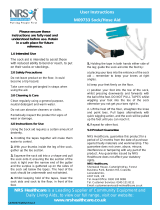
DynaPCN 10-20-xx Ethernet Communication Protocol Rev. 1-4 Contents
3 /
Contents
Trademarks ........................................................................................................................................................ 2
Revision history .................................................................................................................................................. 2
Contents ...................................................................................................................................................................... 3
1 Introduction ......................................................................................................................................................... 5
2 Commands list .................................................................................................................................................... 6
2.1 diagnostic_en ........................................................................................................................................... 6
2.2 disconnect ................................................................................................................................................ 6
2.3 enable_pc ................................................................................................................................................. 6
2.4 fw_version ................................................................................................................................................ 7
2.5 gcounters .................................................................................................................................................. 7
2.6 gdatetime .................................................................................................................................................. 7
2.7 gdoorstatus ............................................................................................................................................... 8
2.8 input0 ........................................................................................................................................................ 8
2.9 input1 ........................................................................................................................................................ 9
2.10 ker_version ............................................................................................................................................. 10
2.11 pcn1001_status ...................................................................................................................................... 10
2.12 rdsave ..................................................................................................................................................... 11
2.13 reboot ..................................................................................................................................................... 11
2.14 reset........................................................................................................................................................ 11
2.15 restore .................................................................................................................................................... 12
2.16 sdatetime ................................................................................................................................................ 12
2.17 sled ......................................................................................................................................................... 12
2.18 sys_version ............................................................................................................................................ 13
2.19 testin0 ..................................................................................................................................................... 13
2.20 testin1 ..................................................................................................................................................... 13
2.21 version .................................................................................................................................................... 14
2.22 updateI ................................................................................................................................................... 14
2.23 updateF .................................................................................................................................................. 15
3 Application flow ................................................................................................................................................ 16
Notes .......................................................................................................................................................................... 17


















